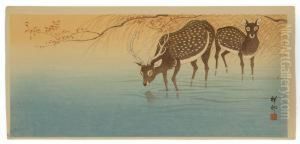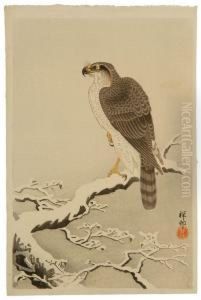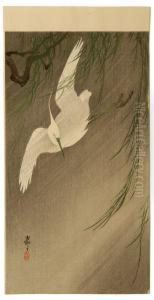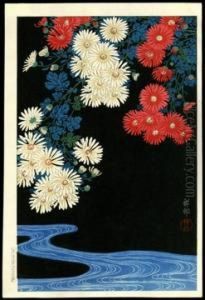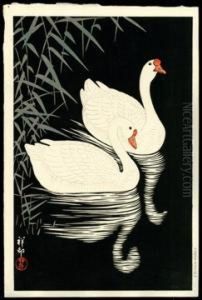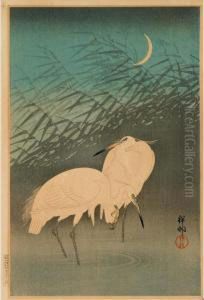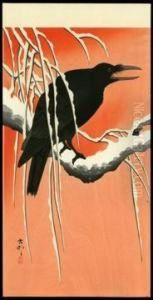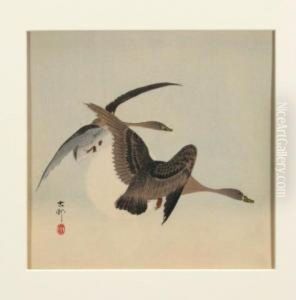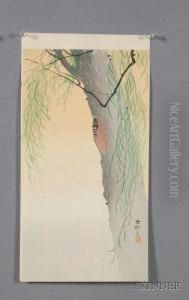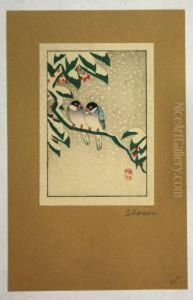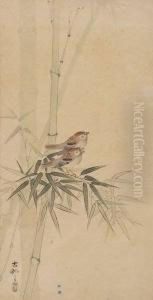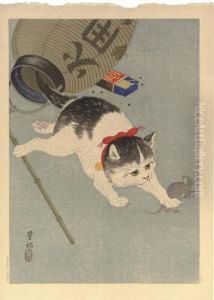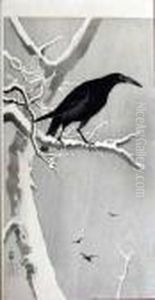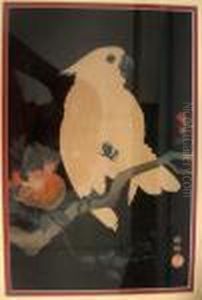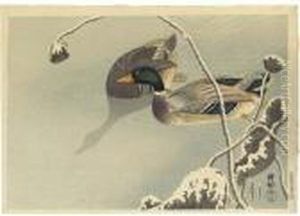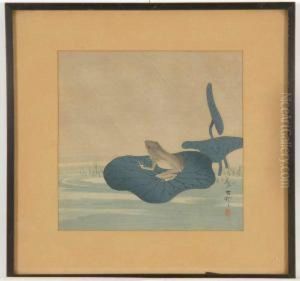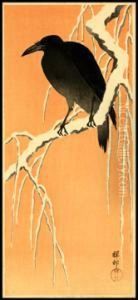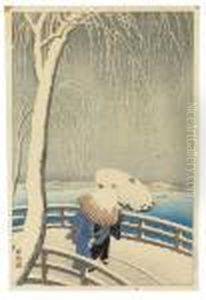Ohara Koson Paintings
Ohara Koson was a Japanese painter and printmaker of the late 19th and early 20th centuries, particularly renowned for his kacho-e (bird-and-flower) woodblock prints. Born in Kanazawa in Ishikawa Prefecture, Japan, in 1887, Koson's real name was Ohara Matao. He initially studied painting under Suzuki Kason, although his focus turned to woodblock printing after moving to Tokyo.
Koson's style was influenced by the shin-hanga movement, which sought to revitalize traditional ukiyo-e art by integrating Western elements, such as the use of light and perspective, with Japanese subjects and techniques. He became one of the foremost practitioners of this style, primarily creating prints of animals, birds, and flowers with a serene and decorative quality that appealed to both Japanese and Western audiences.
During his career, Koson worked with several publishers, including Watanabe Shozaburo, who played a significant role in promoting shin-hanga artists. His works were exhibited internationally and collected widely during his lifetime, contributing to the resurgence of interest in Japanese printmaking in the early 20th century.
Amidst World War II, Koson's work took a patriotic turn, and he produced a number of prints with war motifs. However, his most enduring and popular works remain his peaceful and meticulously detailed kacho-e prints.
Ohara Koson passed away in 1945, leaving behind a substantial body of work that continues to be celebrated for its beauty and technical proficiency. His prints are still highly sought after by collectors and are considered an important part of the shin-hanga movement and Japanese art history.



